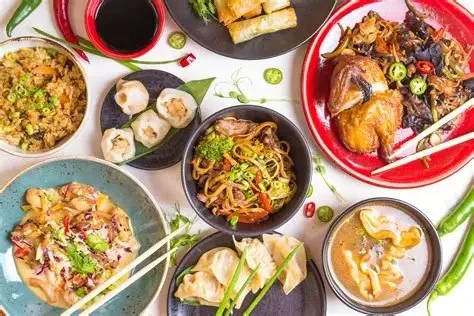
- 1. Introduction to Modern Asian Cuisine
- 2. Adapting Traditional Recipes for Today's Tastes
- 3. The Rise of Fusion Flavors
- 4. Health-Conscious Cooking in Asian Restaurants
- 5. Popular Examples of Modernized Asian Dishes
1. Introduction to Modern Asian Cuisine
Asian cuisine has a rich history that spans thousands of years, with diverse flavors, ingredients, and cooking techniques. Traditional Asian recipes have been passed down through generations, each culture adding its own unique twist. However, as tastes evolve and global trends shift, many Asian restaurants are adapting these classic recipes to cater to modern palates.
Today, diners expect more than just authentic dishes; they seek innovative, healthy, and visually appealing meals that still honor the cultural roots of Asian food. This has led to the rise of modern Asian cuisine, which blends traditional flavors with contemporary techniques and ingredients. In this article, we’ll explore how Asian restaurants are embracing this change and meeting the demands of the modern consumer.
2. Adapting Traditional Recipes for Today's Tastes
As global tastes evolve, chefs are revisiting traditional Asian recipes and incorporating modern elements. The goal is to maintain the authenticity of the dishes while offering something new and exciting for today’s diverse and health-conscious diners.
One way Asian restaurants are achieving this is by simplifying traditional recipes without sacrificing flavor. For instance, many chefs are reducing the use of heavy oils or refining cooking methods to focus on lighter, fresher preparations that appeal to health-conscious consumers. Dishes that were once deep-fried are now grilled or steamed, and sweet, salty, or spicy sauces are often adjusted to reduce sodium or sugar content.
Moreover, many restaurants are offering smaller portion sizes or more customizable options, allowing diners to tailor their meals to fit their specific preferences. This flexibility is especially popular in fast-casual restaurants where customers are looking for quick, healthier alternatives to traditional comfort foods.

Good Thanks Cafe / good thanks cafe
New YorkNew York CountyNew York
131 Orchard St, New York, NY 10002, USA
3. The Rise of Fusion Flavors
Fusion cuisine is one of the most notable trends in the adaptation of traditional Asian dishes. By blending ingredients and techniques from different cultures, chefs are creating new dishes that are both familiar and innovative. This fusion approach is especially evident in Asian restaurants across the United States, where chefs often combine Asian staples with Western flavors.
For example, sushi rolls filled with non-traditional ingredients like avocado, spicy mayo, or even tempura are now commonplace. In other cases, chefs are experimenting by integrating Asian spices with popular Western ingredients like quinoa or kale, giving them a unique twist. These fusion dishes not only cater to modern taste buds but also introduce Asian cuisine to new audiences.
The influence of fusion flavors can also be seen in the rise of Asian-inspired tacos, burgers, and pizza, where traditional Asian ingredients like kimchi, bulgogi, or wasabi are paired with beloved Western comfort foods.
4. Health-Conscious Cooking in Asian Restaurants
As health-conscious eating habits continue to grow, many Asian restaurants are focusing on providing options that meet the nutritional needs of today’s diners. Low-carb, gluten-free, and vegetarian options are now widely available on menus, with traditional dishes being adapted to cater to these dietary preferences.
Asian cuisine offers a great foundation for health-conscious cooking, with its emphasis on fresh vegetables, lean proteins, and complex flavors. For instance, instead of using heavy sauces, many chefs are turning to fresh herbs, citrus, and fermented ingredients like miso and soy to enhance flavors in a healthier way. Additionally, the popularity of plant-based diets has spurred the creation of innovative plant-based versions of traditional meat-centric dishes such as tofu stir-fries or plant-based sushi rolls.
Many Asian restaurants are also offering customizable bowls and wraps, allowing customers to choose their base, protein, vegetables, and sauces. This empowers diners to control the nutritional content of their meal while still enjoying the bold flavors of traditional Asian cuisine.
5. Popular Examples of Modernized Asian Dishes
Here are some popular examples of how Asian restaurants are modernizing traditional recipes to meet today’s culinary trends:
- Vegan Sushi Rolls: Traditional sushi is being reinvented with plant-based ingredients such as avocado, cucumber, and sweet potatoes, making it suitable for those following a vegan or vegetarian diet.
- Korean BBQ Tacos: The fusion of Korean BBQ flavors with Mexican tacos is a perfect example of how Asian cuisine is being adapted for modern tastes. These tacos often feature marinated meats like bulgogi or kimchi alongside traditional taco fillings.
- Healthy Ramen Bowls: Ramen, a staple of Japanese cuisine, is being transformed with healthier, gluten-free noodles, low-sodium broths, and an abundance of fresh vegetables.
- Asian-Inspired Buddha Bowls: A healthy, customizable option, these bowls combine rice or quinoa with a variety of vegetables, protein, and a choice of Asian-inspired dressings, such as miso or sesame.
- Rice Paper Spring Rolls: Often seen as a lighter alternative to fried spring rolls, these fresh, healthy rolls are filled with vegetables, shrimp, or tofu and served with dipping sauces that offer complex, balanced flavors.
As you can see, Asian restaurants are finding creative ways to adapt traditional recipes to suit the preferences of modern diners. From fusion dishes to health-conscious options, the evolution of Asian cuisine continues to excite food lovers and push culinary boundaries.
For more great restaurant recommendations and dining tips, check out Dine Droop, your go-to source for exploring the best in modern and traditional Asian dining!





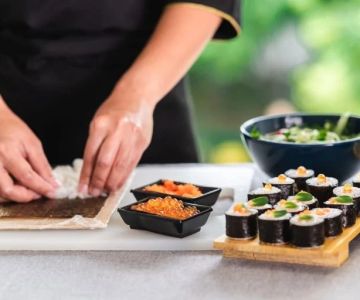
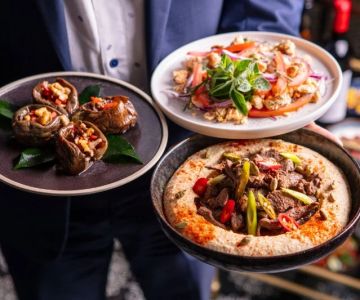

 IHOP3.0 (470 reviews)
IHOP3.0 (470 reviews)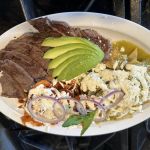 Al Chile4.0 (87 reviews)
Al Chile4.0 (87 reviews) Vive La Crepe4.0 (28 reviews)
Vive La Crepe4.0 (28 reviews) International Cafe & BBQ4.0 (276 reviews)
International Cafe & BBQ4.0 (276 reviews) Supreme pizza NY3.0 (23 reviews)
Supreme pizza NY3.0 (23 reviews) Munch Heimish4.0 (241 reviews)
Munch Heimish4.0 (241 reviews)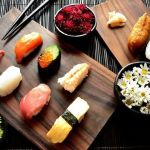 Best Sushi Restaurants for Every Budget and Taste: A Complete Guide
Best Sushi Restaurants for Every Budget and Taste: A Complete Guide The Appeal of French Restaurants for Special Occasions
The Appeal of French Restaurants for Special Occasions Exploring Vegan Restaurants That Focus on International Flavors
Exploring Vegan Restaurants That Focus on International Flavors How Pizza Restaurants Are Attracting Customers With Limited Edition Offerings
How Pizza Restaurants Are Attracting Customers With Limited Edition Offerings How Wine Bars Are Organizing Pairing Nights for Enthusiasts
How Wine Bars Are Organizing Pairing Nights for Enthusiasts How Juice Shops Are Integrating Superfoods Into Daily Menus
How Juice Shops Are Integrating Superfoods Into Daily Menus